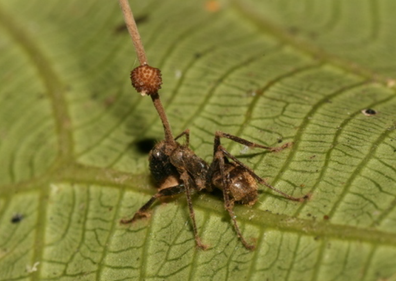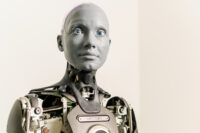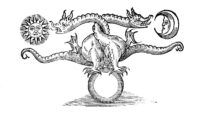Speculation and conspiracy theories naturally flow from horrific massacres such as occurred in Las Vegas: Steve Paddock was trying to sell guns, was killed to make it look like a suicide; he was a hit man with a specific target among his victims, all others shot merely as a cover to his actual intent; he snapped due to unpaid gambling debts; he was turned into a zombie by online gambling.
The last in the list made me think of Ophiocordyceps unilateralis, the so-called zombie fungus which infects ants of the Camponotini species in tropical forests. Once infected, the ant’s brain is controlled; the ant leaves the forest floor and climbs into the canopy, where its mandibles clamp down upon the vein of a leaf and there it remains until it dies and the fungus sprouts its spore-bearing fruiting body from within the ant’s head (photo above). Something got into Paddock’s head, though not likely a zombie fungus.
But sitting at his windows in a suite on the 32nd floor of the Mandalay Hotel, the people at the music festival surely looked like ants to Paddock. I’m reminded of the scene in “The Third Man” during which Harry Lime (played by Orson Welles) and Holly Martins (played by Joseph Cotton) are seated in a compartment at the very top of a Ferris wheel; Harry admits he has been trafficking in life saving drugs that have been adulterated so as to be ineffective. Confronted by Holly, he directs him to look down to the ground, and remarks “Would you really feel any pity if one of those dots stopped moving forever?” That’s what the people in Las Vegas had become to Paddock: dots.
Perhaps it’s instructive to invoke the myth of Achilles, the mortal protected from physical harm except at his heel. Achilles was the son of the King of the Myrmidons, the island of Thessaly where its ants were transformed into people by Zeus. This myth reflects the human experience of simultaneously being individuals and just one of the crowd. And Achilles? He’s celebrated for being the fiercest killer in the Greek forces fighting the Trojans in Homer’s “Illiad.” The nature of Paddock’s Achilles’ heel fuels great speculation.
The matter of motive preoccupies the media, but sometimes motive is the least of it. When Charles Whitman climbed to the 27th floor of the tower at the University of Texas and systematically shot seventeen people he was immediately enshrined in the book of mass murderers. Less known is the help he sought from mental health professionals before committing his heinous act; afflicted by uncontrollable urges to violence, he repeatedly asked for treatment, but was dismissed. Only later did an autopsy indicate that a glioblastoma brain tumor was pressing against his amygdala, the seat of emotion. Like an ant infected by the zombie fungus, Whitman may not have been in control of his own actions.
What’s the effect of sitting before a poker-playing computer for days at a time? Do digital representations of “real” cards lead to seeing real people as mere representations? Once the computer gambling experience becomes ordinary, what’s required to generate the same level of endorphins that come with constantly winning big money? The keynote of addiction is the need for ever-greater stimulation to achieve the same reward. Perhaps Paddock had become an ant to himself, tiny, one of billions, inconsequential. That’s motive enough.






Be First to Comment